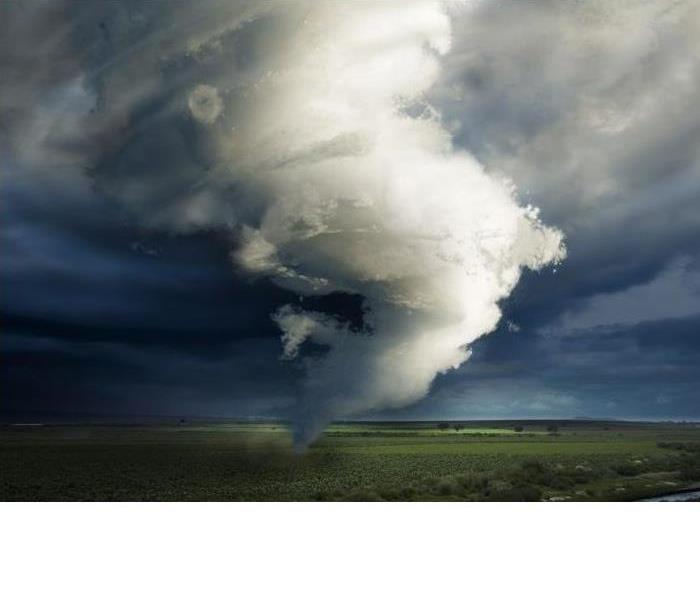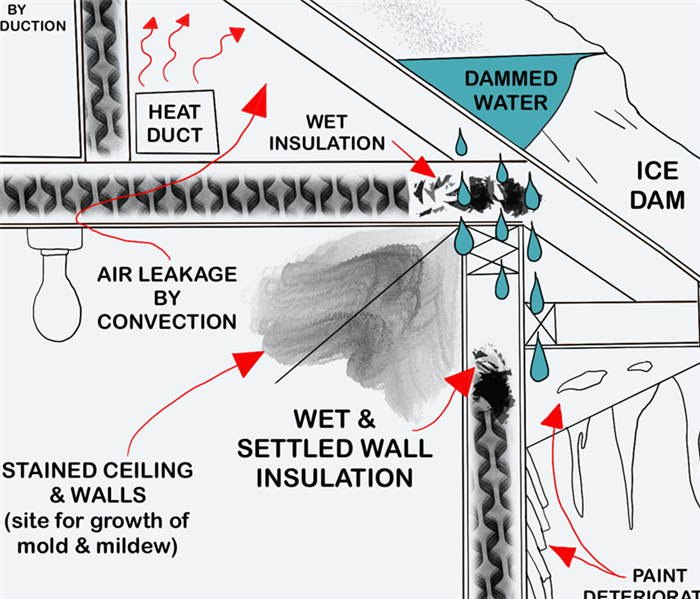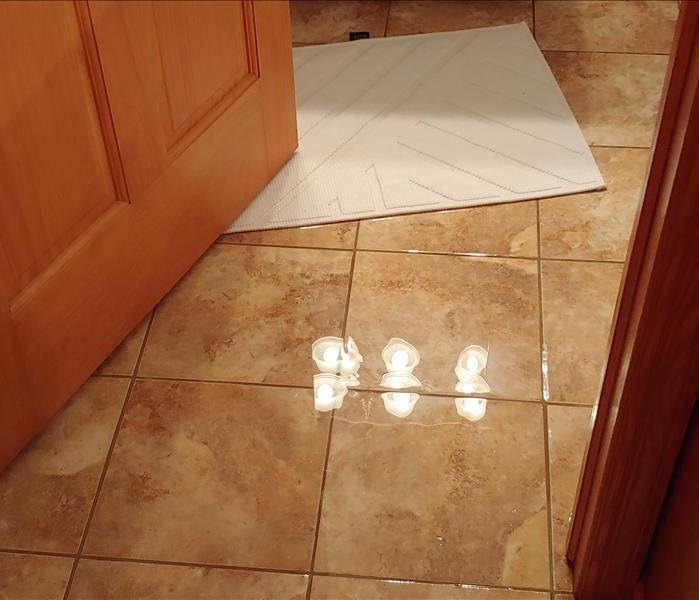Recent Storm Damage Posts
Tornadoes in Wisconsin: What You Need to Know
6/17/2021 (Permalink)
 Do you have an emergency plan for severe storms?
Do you have an emergency plan for severe storms?
Tornadoes are known to cause widespread damage throughout the United States. Wisconsin's peak tornado season runs from April through September with an average of 20 tornadoes per year. The majority of those tornadoes strike in the month of June.
But how much do we truly know about these destructive entities that tear through our homes and businesses?
Here are a couple of quick facts about tornadoes:
The average tornado travels Southwest to Northeast, but have been known to move in any direction.
Tornadoes are most likely to occur between 3pm and 9pm, but can occur at any time.
Dr. T. Theodore Fujita devised the F0-F5 Scale for tornadoes in 1971.
In 2006 the National Weather Service unveiled the Enhanced Fujita Scale (EF Scale).
A tornado normally appears transparent until it picks dust and mud from the ground.
The USA averages around 1,200 tornadoes every year, more than any other country.
In the southern hemisphere tornadoes usually rotate in a clockwise direction. In the northern hemisphere tornadoes usually rotate in a counterclockwise direction.
Signs of Danger
We encourage everyone to be weather aware. Have a family plan in the event of a tornado warning. Know where your safe areas are wherever you are.
For more information on tornadoes and thunderstorms and how to keep safe during these events, the Wisconsin Department of Health Services has provided a helpful guide that you can find here.
Winter Storm Damage in the Eau Claire Area
1/2/2020 (Permalink)
 Winter weather in the Chippewa Valley can cause serious damage to your home.
Winter weather in the Chippewa Valley can cause serious damage to your home.
Everything you need to know about ice dams
With temperatures teetering on the edge of freezing in the Eau Claire area, ice dams are in their prime to form. Eau Claire and Chippewa Falls saw about 8 inches of snow last week. That is plenty to form an insulating layer of snow, creating the perfect storm for an ice dam. SERVPRO of Eau Claire wants you to know what to look for before you get water damage or growth in your home.
So what is an ice dam?
An ice dam is a ridge of ice that forms at the edge of a roof that prevents melting snow (water) from draining off of the roof. The water that backs up behind the dam can leak into the building or home and cause damage to ceilings, walls, insulation, and other areas. Most of the time, it is not caught right away and where there's water that's been sitting, there is usually growth or the start of it. Don't worry! SERVPRO of Eau Claire is always here to help!
What causes ice dams?
The easy answer is nonuniform roof temperatures. Let's break that down a little bit further though. There are three things that all come into play for ice dams to form
- Heat loss from the building or home
- A layer of dry snow on the roof which creates good insulation
- Outside temperatures must be below freezing (32 degrees Fahrenheit)
If any of the above are absent, ice dams cannot form.
When building heat coming through the roofs surfaces melts the snow on the roof, this causes meltwater to flow down the roof until it reaches a place that is below freezing (eaves that don't get heat from the building). Once the meltwater reaches the frozen surface, it accumulates over time creating a barrier of ice that the meltwater gets caught behind.
How can you prevent ice dams?
Do you know how much weight your roof can hold? By removing the snow, it eliminates one of the ingredients necessary for an ice dam to form. You can use a push broom or a "roof rake" to remove the snow. In order for this to be effective ALL of the snow needs to be removed from the roof. If only part of the snow was removed from the roof, an ice dam will form where the snow was left.
*Please note that removing snow is only a temporary fix and can cause more damage to the roof. It's always a good idea to call in the professionals*
- Make the ceiling airtight so no warm, moist air can flow from the house to the attic space
Natural roof ventilation can help maintain uniform roof temperatures. If heat transfer has been reduced substantially, then snow will build up on the room and cover the ventilation systems, reducing attic ventilation. Natural attic ventilation systems are necessary to dry and remove heat build up from the attic.
Call us at 715-834-3572
SERVPRO of Eau Claire is available to help 24/7, 365 days a year. We've got a team of trained technicians that are ready, around the clock, for whatever happens.
Don't forget to check us out on Facebook @EauClaireSERVPRO
When Storms or Floods hit Eau Claire, SERVPRO is ready!
11/13/2018 (Permalink)
 Our highly trained crews are ready to respond 24/7 to storm or flood damage in Eau Claire.
Our highly trained crews are ready to respond 24/7 to storm or flood damage in Eau Claire.
SERVPRO ofEau Claire specializes in storm and flood damage restoration. Our crews are highly trained and we use specialized equipment to restore your property to its pre-storm condition.
Faster Response
Since we are locally owned and operated, we are able to respond quicker with the right resources, which is extremely important. A fast response lessens the damage, limits further damage, and reduces the restoration cost.
Resources to Handle Floods and Storms
When storms hit Eau Claire, we can scale our resources to handle a large storm or flooding disaster. We can access equipment and personnel from a network of 1,650 Franchises across the country and elite Disaster Recovery Teams that are strategically located throughout the United States. We partnered with the storm team to assist in the resent major storm event in Madison WI.
Have Storm or Flood Damage? Call Us Today 715-834-3473
The Weather Outside Is Frightful!
4/16/2018 (Permalink)
If you weren't lucky enough to be in a warm and tropical climate over the past weekend, you saw Mother Nature doing her best to remind everyone, just who says it is officially spring! In some Wisconsin towns, as much as 30" of snow was dumped on everyone. The Dairy state seen everything from, rain, sleet, lightning and thunder, high winds, and most definitely saw plenty of snow! With the snow, and rain comes many issues that can effect your home and business.
Remember to clear snow away from your vents, in order to keep from blocking them and causing deadly gases from building up in your home. Clear off your roof to help lessen the wait that heavy snow and ice can cause. Salt your steps and sidewalks to help prevent slips and falls. When running your vehicles to warm up, remember to open the garage door for proper ventilation.
Although lightning can happen at anytime, the chances are rare with winter like weather. No matter what time of the year lightning happens, here's some safety tips.
- HAve a lightning safety plan, and cancel or postpone outdoor activities if thunderstorms are expected.
- If you do get caught outside, avoid high grounds, open spaces, and all metal objects including electric wires, fences, etc. Seek shelter in a substantial building or a fully enclosed metal vehicle.
- If you are indoors, stay away from doors and windows. Do not use the telephone. Consider unplugging computers, power tools, and tv sets. Lightning may strike exterior electric/phone lines, inducing shocks to inside equipement.
Source for lightning tips are from the National Weather Service.
Severe Weather Safety
3/5/2018 (Permalink)
Severe weather happens any time, anywhere. Every single year the US averages 10,000 severe thunderstorms, 5,000 floods or flash floods, 1,300 tornadoes, and 2 land falling deadly hurricanes.
about 98% of all providentially declared disasters are weather related, leading to approximately 650 deaths per year and nearly $15 billion in damage. There are a few steps you can take to better prepare yourself for disasters and possibly save your life or the lives of others.
- Know Your Risks. First step to being weather ready is to understandthe type of hazardous weather that can affect where you live and work, and how the weather can impact you, your business, and your family. Check the forecast regularly, get a NOAA Weather Radio, and learn about Wireless Emergency Alerts. There are many forms of severe weather and your shelter plans should include all types of local hazards.
- Take Action. Take the next step in severe weather preparedness by creating a communications plan for your home and business. Put together or purchase an emergency kit. Keep important papers and valuables in a safe place.
Be an Example. Once you've taken action to prepare for severe weather, share your story with friends and family, coworkers, on your social media accounts. Your time and effort to be prepared will be an inspiration to others and encourage them to do the same.
Contact SERVPRO of Eau Claire for more readiness tips and tools, including SERVPRO's Emergency Ready Profile (ERP). Having an ERP in place for you or your facility can help minimize business interruption in the event of a disaster. SERVPRO of Eau Claire will help you be "Ready for whatever happens!"
***Facts and figures provided by noaa.gov





 24/7 Emergency Service
24/7 Emergency Service


